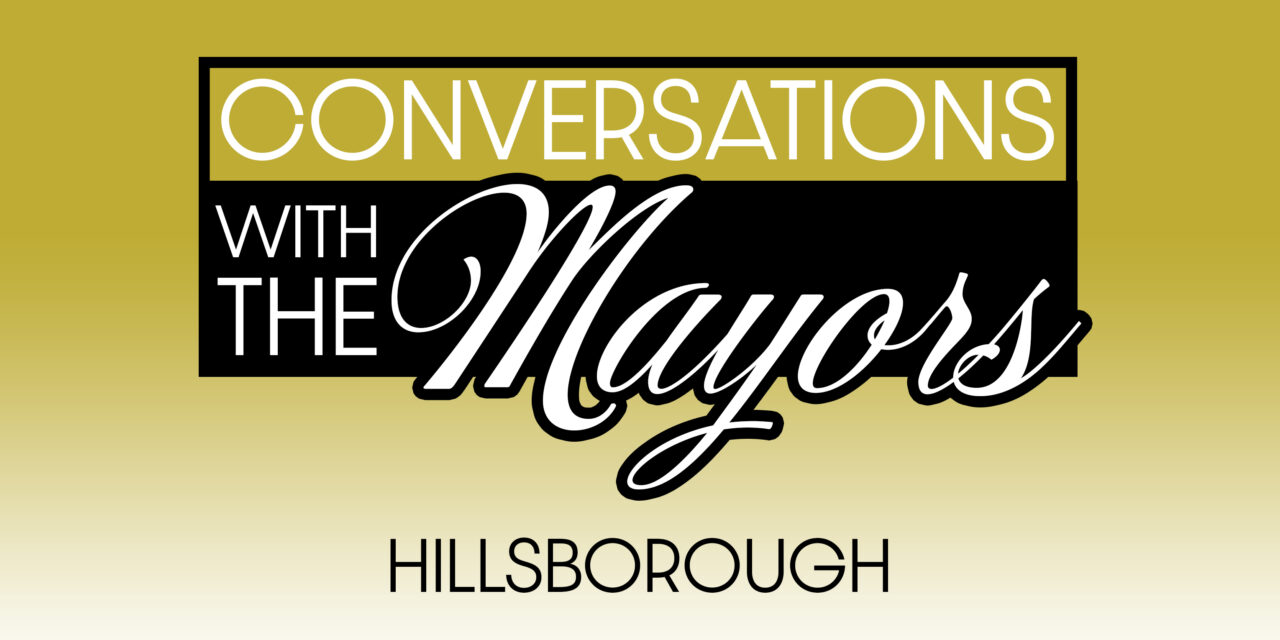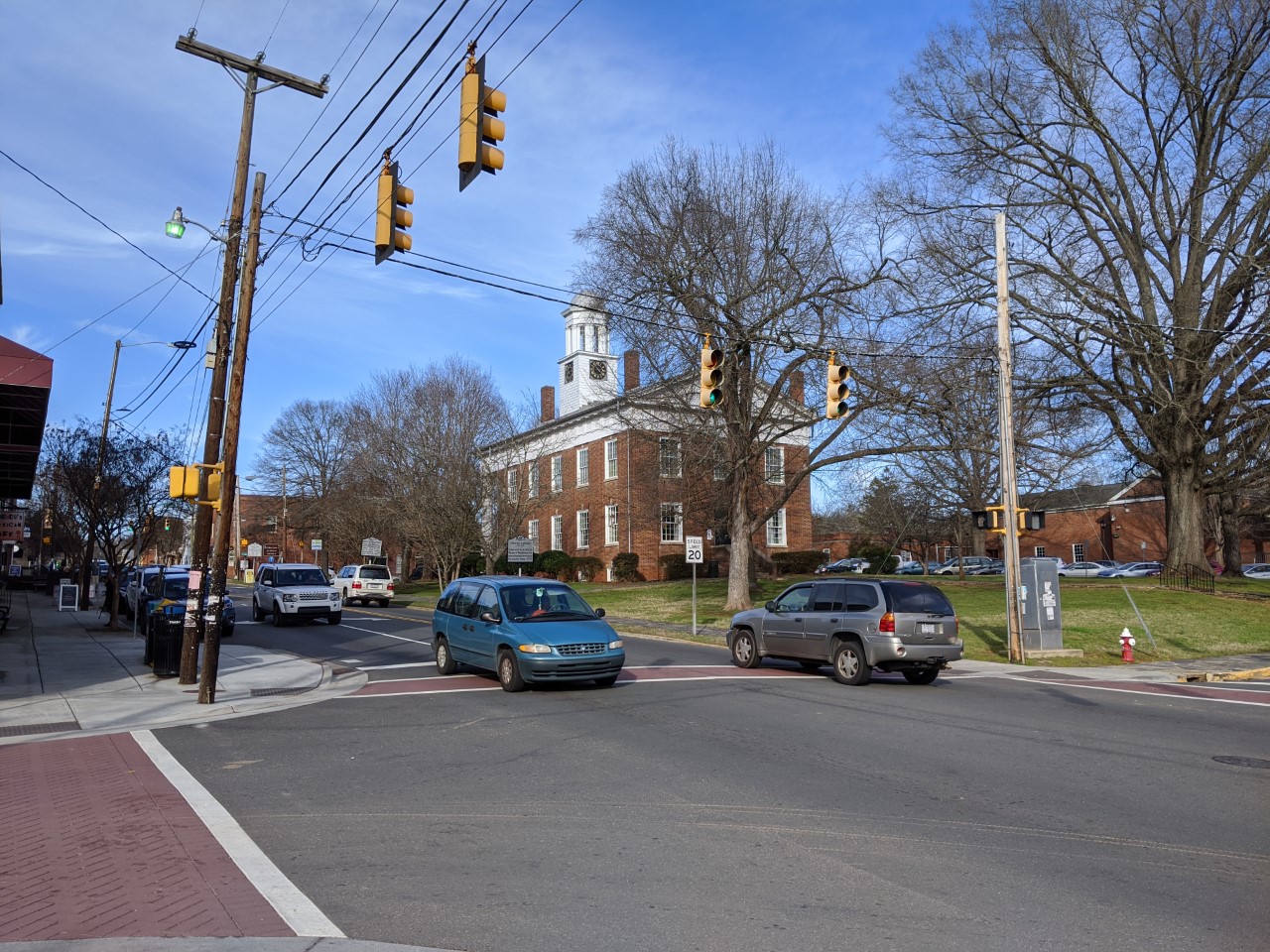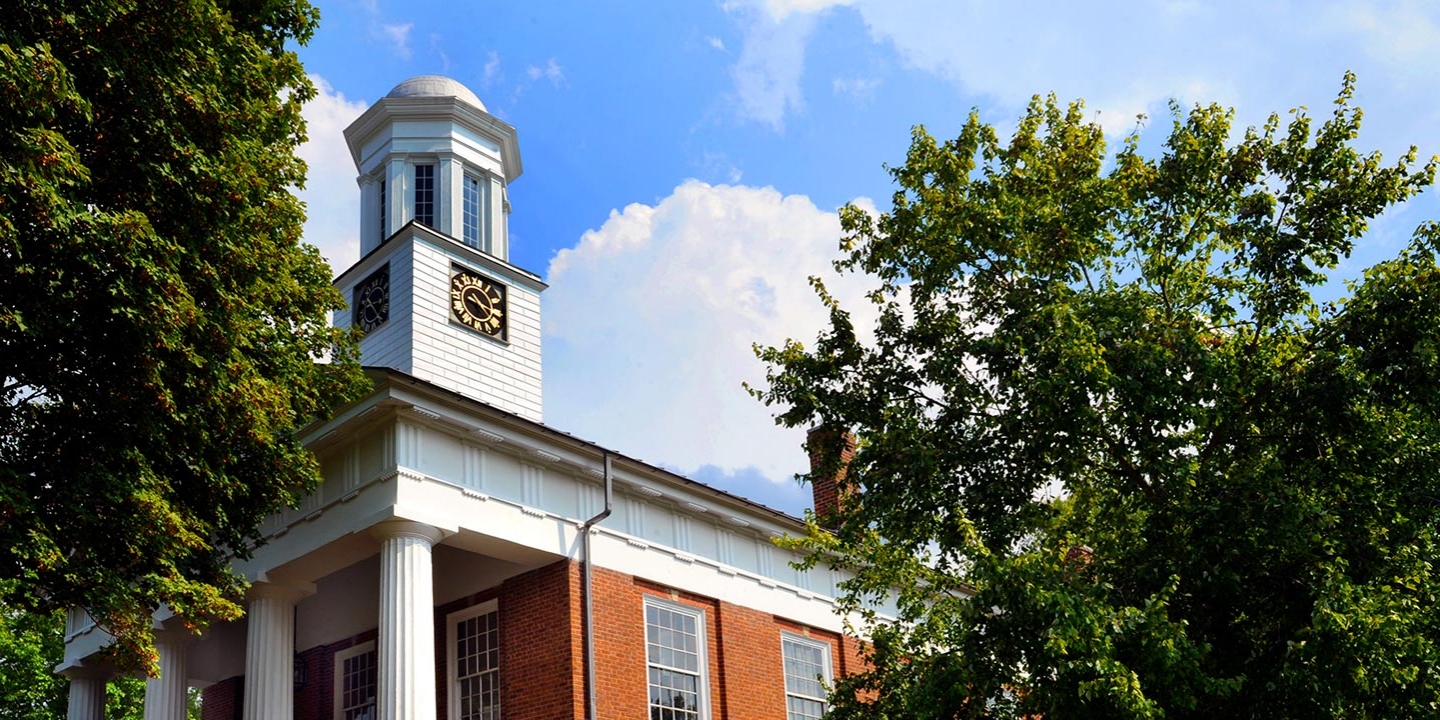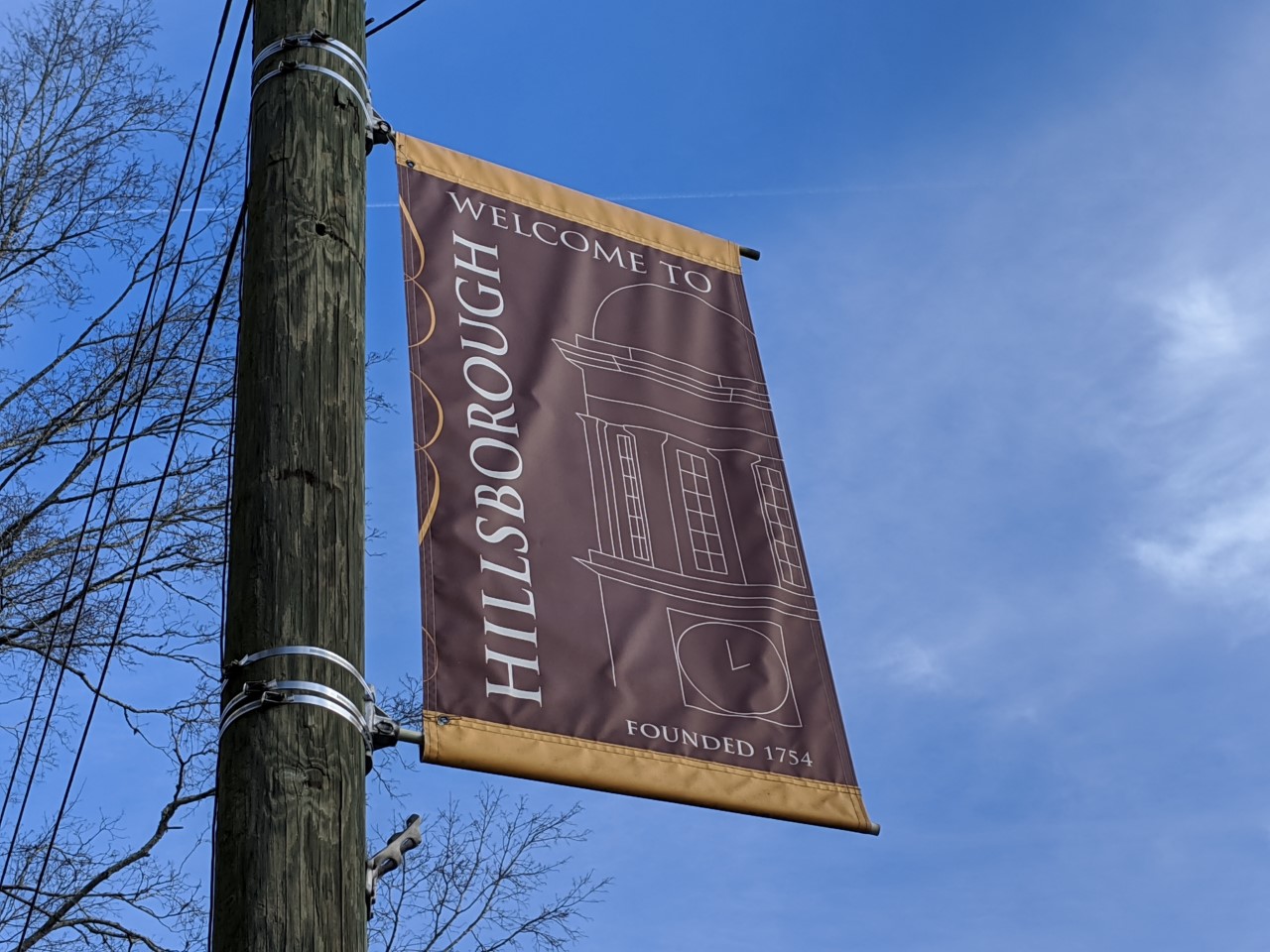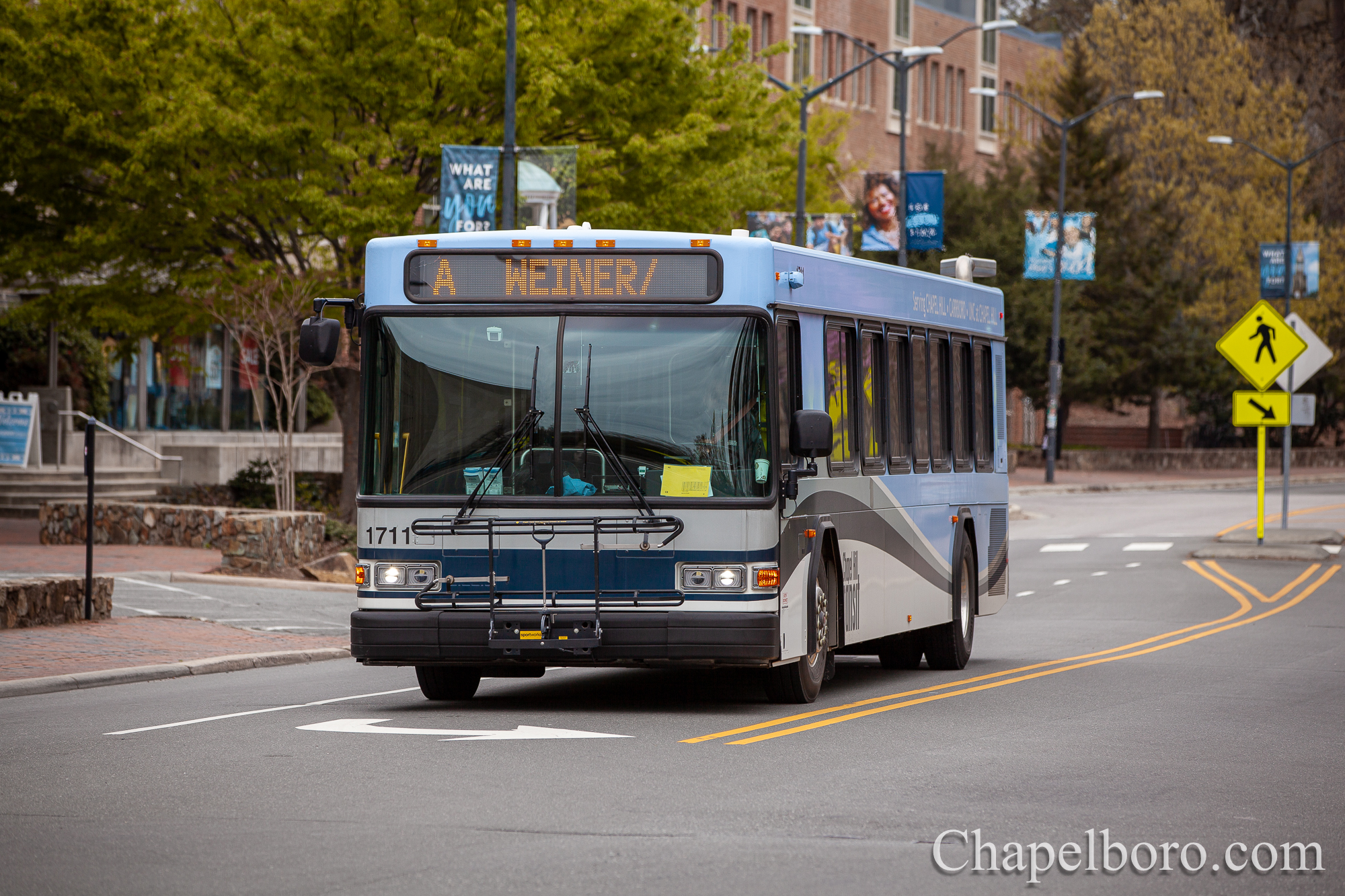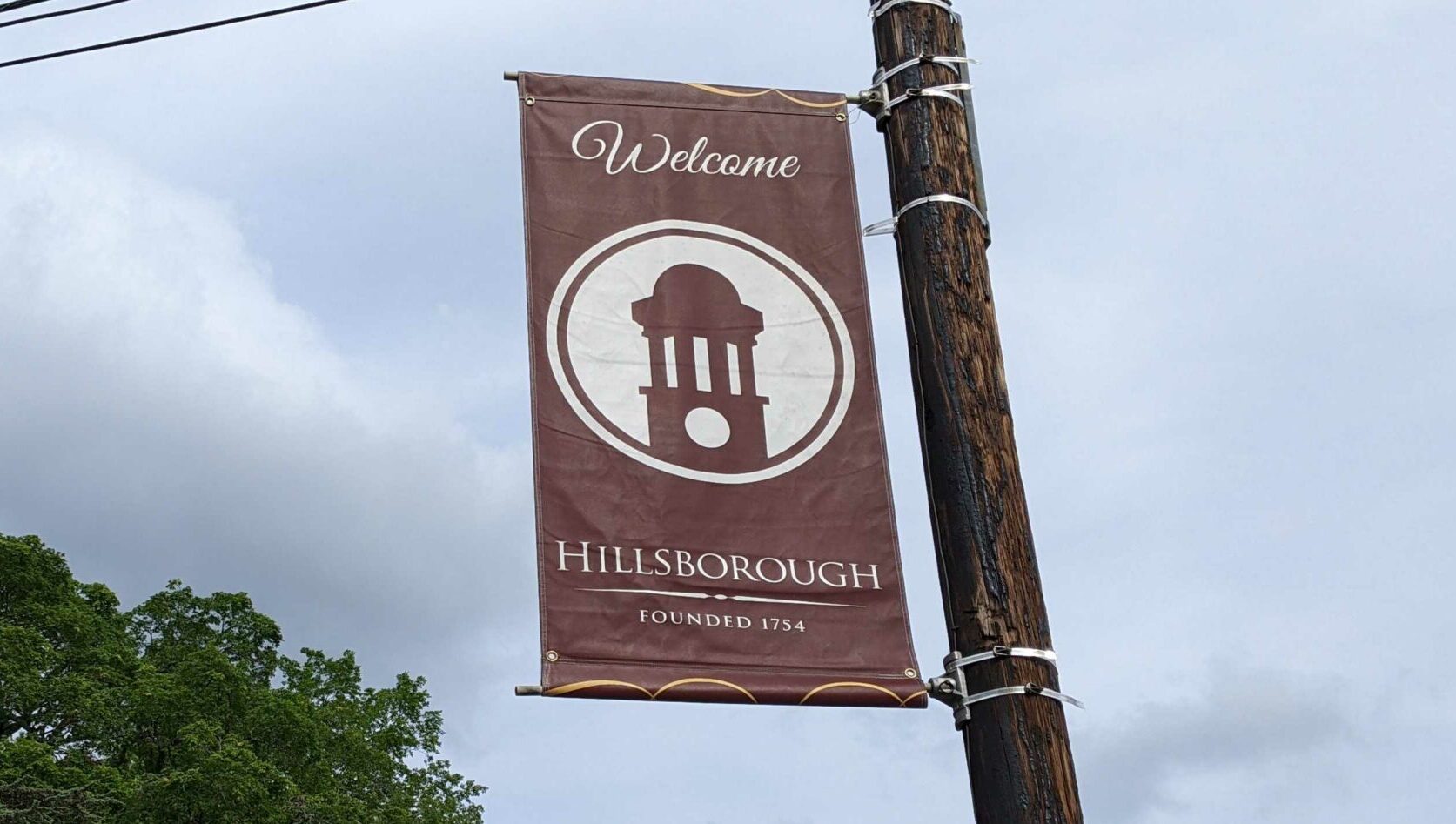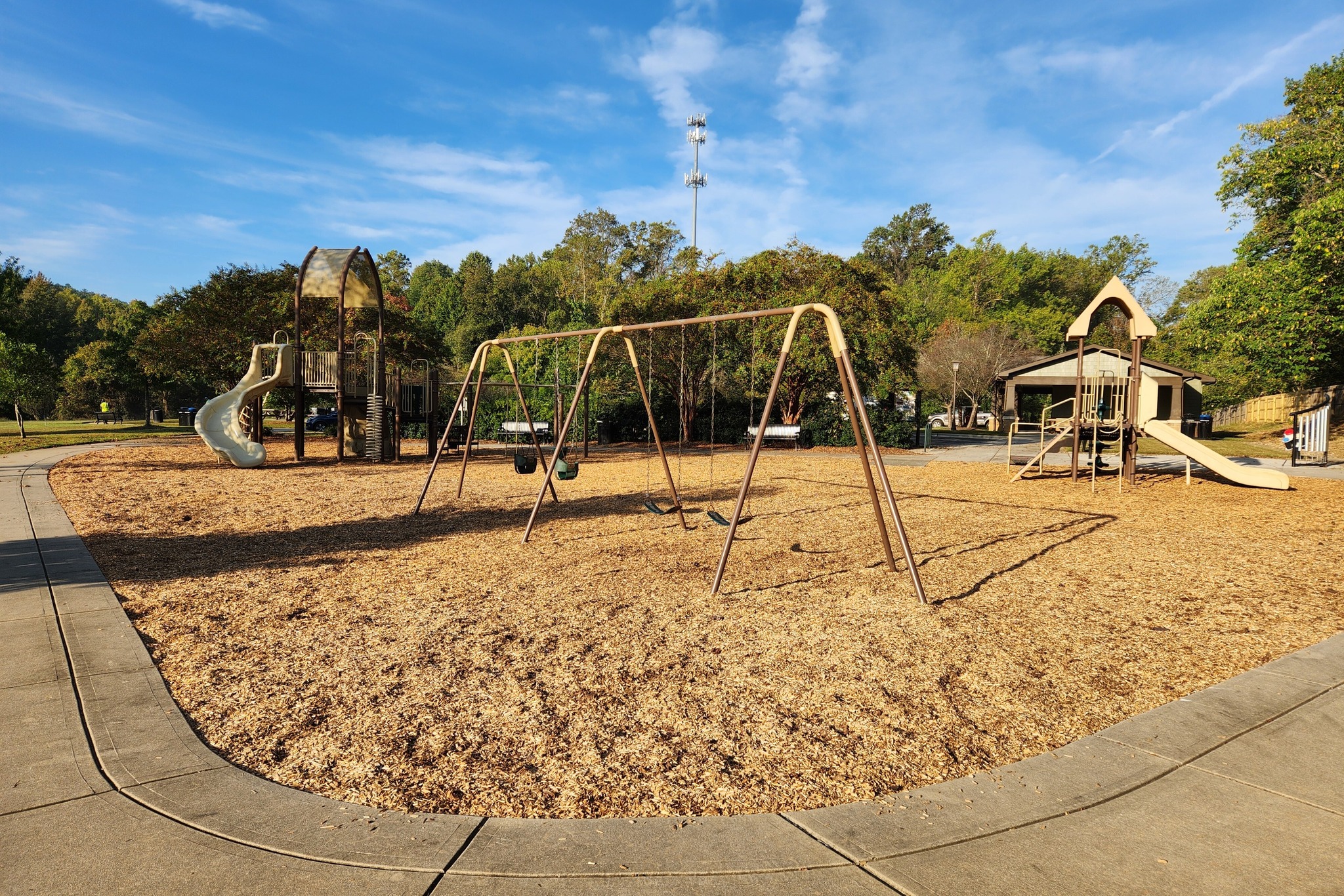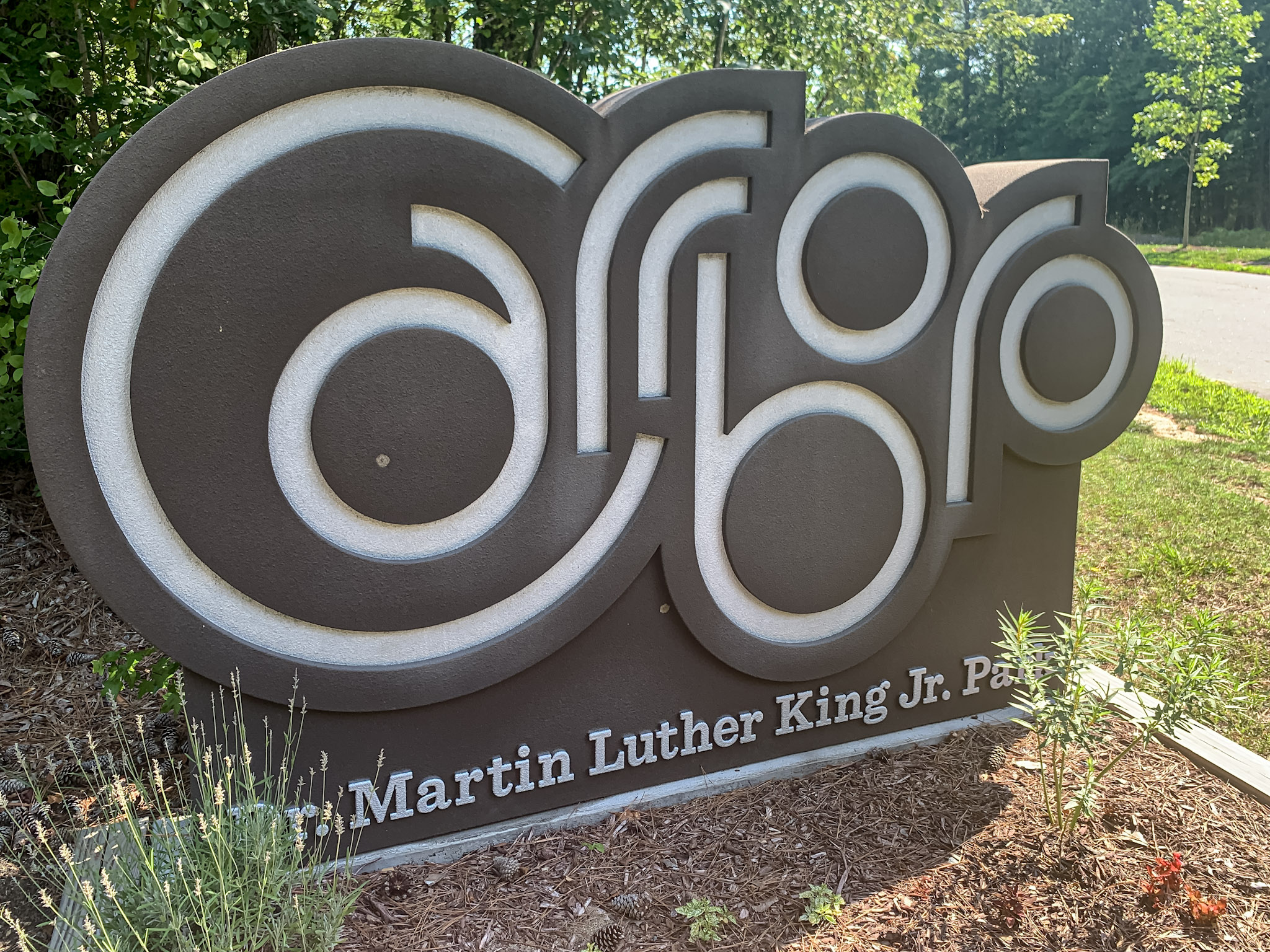Hillsborough Mayor Jenn Weaver spoke with 97.9 The Hill’s Andrew Stuckey on Tuesday, July 19th. This is an edited transcript of their discussion of the town’s new banners, COVID protocols, and how to balance development with a historic downtown. The transcript has been lightly edited for clarity. Listen to the full interview here.
Andrew Stuckey: I’ve got to admit, I’m a little bit excited about this first question. Last week, we saw the debut of the long-awaited banners on utility poles up in Hillsborough. What can you tell me about the new banners?
Jenn Weaver: Hallelujah! I wish I had prepared a song that perhaps I could sing you in tribute to the banners. It has been quite a saga with many conversations community-wide and here on the radio. The banners are up, they look great, and it’s terrific to see our refurbished, revamped logo up — which our communications team won a statewide award for. It’s great to have those up on the poles and looking forward to the other versions of them when they’re changed out for holidays throughout the year.
Stuckey: Can we get some highlights on what else there is? I haven’t seen them in person yet, but on social media, the ones up now are the “Welcome to Hillsborough” ones. So, what are a couple of other types of banners that we’ll see throughout the year?
Weaver: Right now we just have three different options. The ones that are up now, the “Welcome to Hillsborough” ones, will be up year-round — except on the occasions when we switch them out for either the banners that have the American flag or the Pride flag on them. It’s not a full flag, but it’s just how the design works out.
The town's new welcome banners were installed late last week. The town received a first-place award for its refreshed branding in April from the North Carolina City and County Communicators.https://t.co/syhIUSzVmM pic.twitter.com/GuwWif2FFr
— Town of Hillsborough (@HillsboroughGov) July 18, 2022
Stuckey: All right. Exciting times indeed in Hillsborough!
I understand that the (Orange County) mayors have regular meetings. And one of the things that comes up in those meetings has been what the response is to COVID and what our current situation is with COVID. We haven’t actually talked about it that much in a while, but we do see numbers surging with the BA.5 variant. I’m just wondering if there are any updates in those conversations that the mayors have about the response to COVID.
Weaver: You know, the main thing, as we’ve been communicating for the last several months, is that for our area, we have such a big responsibility regarding our hospital system. Because we are home to a hospital that doesn’t serve just our immediate community, but it serves our region and indeed our whole state in many ways. We are very mindful of how important it is that we do our part to keep our hospital system from getting overwhelmed. What the mayors are hearing from the health director and Chair [Renée Price], at least as of the end of last week, is that our hospitals are doing okay right now. And so people need to be mindful that there is high community spread right now. People really need to get boosted. Orange County’s booster rate is a little bit higher than the state average, but there are still lots of people who haven’t gotten the boosters that they’re eligible for. I just strongly encourage people to get those because your protection does wane over time.
And this is also a good time to think about wearing your masks inside. I personally would encourage people to wear their masks inside. So we hope we’ll see those numbers come down soon, but we’re still riding this event that keeps coming in waves. I just want to acknowledge that sometimes it’s a little bit confusing for the public: because on the one hand we definitely have this high spread and on the other hand, the governor’s emergency order expired on the 15th. We continue to pay close attention and make the best decisions we can with the information we have.
Stuckey: I know that Hillsborough has this amazing historic downtown that I have visited. I also know that there’s some serious population growth happening. I’m wondering how you balance a historic downtown that kind of has a finite area with population growth and a business sector that kind of wants to grow with that residential population. How does that work from a development standpoint in the town?
Weaver: I love this question so much because it’s something that many iterations of the town board have thought about and been very intentional about for at least the past 15 years — probably more. The historic part of Hillsborough, that historic downtown, is so, so important to our identity, to our success as a town, to our economy. And if downtown is doing well, then that means that all the other parts of our community are going to be doing well. Everything is very much dependent on each other and part of the same economic ecosystem. We really try not to think about them as separate but as interwoven and interdependent, because they certainly are.
And for a good while, Hillsborough has been growing. Even though there has been that small downtown area, we have all these other neighborhoods that so many people live in and are such integral parts of our community. And so it’s just important to keep all those in mind together. As far as planning purposes go for new development, it has been the practice of following some good principles of planning to encourage the new housing development to go south of the river and south of the railroad tracks — so that population has easier access to the interstates and are less doing less clogging of the bottleneck that comes through downtown during high traffic times of the day. That’s been a long-time practice and that still continues. What we are really having to contend with now is how that interacts with our wastewater needs, because we are dealing with these capacity issues.
Now, the good news is that the southern part of Hillsborough, which is what we call the Elizabeth Brady River Basin, we’ve definitely got some improvements and upgrades that need to be made down there. But there is more capacity down there than in what we call the river basin, which includes the entire historic district and the Highway 70 corridor and is very, very limited in capacity. That’s something we’re still studying to try and get a hold on: to see where we might be able to expand capacity for the wastewater system and if that’s possible and how much it costs. I happen to be a fan of infill, and downtown is one of our most walkable areas and Highway 70 is a place where we would like to see more business up there. They could be safer for walking in some places, but that’s just something we’re really trying to figure out and contend with and plan smartly with. And our comprehensive sustainability plan is going to help inform us, which of course is still ongoing.
Stuckey: Great. I know a recurring theme when we talk is making Hillsborough more walkable. It seems like that’s something that’s always on your mind and always coming up in planning. Is there anything else on the long- or short-term agenda on Hillsborough’s walkability?
Weaver: Well, the Greenway studies are really the primary focus right now because those take such long-term planning and will take really tremendous investment, and we have to figure out what it will cost so that we can start wrapping our heads around how we will pay for it. What combination of local funds, grant possibilities, it’s a puzzle you have to figure out over time. We also have a connectivity plan that has guided us for a long time, which will be included in the comprehensive sustainability plan that I believe the Parks and Rec board is probably looking at. We’ve had that piece of comprehensive planning for a long time, but we updated it over time so that you can look at that and see what high-priority areas are when the opportunity presents itself to put in sidewalks or bike/ped paths, things of that nature.
Stuckey: We’ve got about a minute left if there’s anything else that you wanted to mention [happening] this week.
Weaver: Sure. Well, coming up this Saturday is the Tomato Picnic at the Burwell School. I’m not sure if there are still tickets available, but people should check that out for sure. It’ll be really fun. Then also this week, we have a joint meeting with the planning board this Thursday evening. This is definitely in the weeds, but it’s important stuff — we’ll be discussing a new type of conditional use zoning, which we will be calling planned development district zoning. And this is something that the staff has been working on in concert with the planning board for many months to replace special use permit zoning, which is a tool that the state removed, and we can no longer use. We have to come up with a new option, so this is just really important for how we make development decisions. I hope folks will attend that meeting or at least read the minutes when it’s over.
Stuckey: Great. Thanks for mentioning that. Jenn, thank you so much. I look forward to talking to you again next week.
Weaver: Thanks for having me, have a good one.
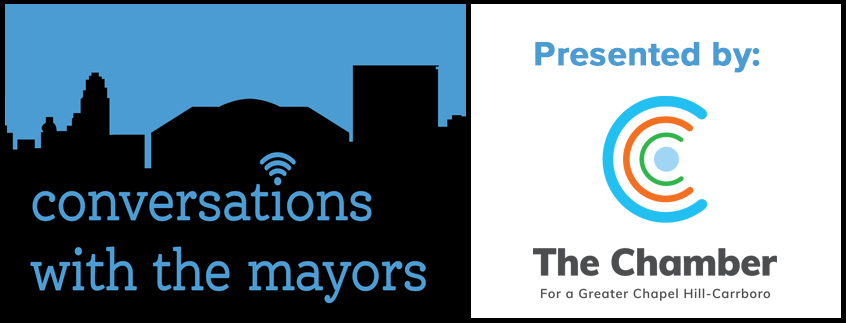
Listen to ‘News on The Hill each week to hear the latest Conversations with the Mayors! The elected leaders of the Chapel Hill, Carrboro, Hillsborough and Orange County governments join 97.9 The Hill to discuss the latest stories from around town and our community. Listen to all episodes here!
Conversations with the Mayors is presented by The Chamber for a Greater Chapel Hill-Carrboro.
Chapelboro.com does not charge subscription fees, and you can directly support our efforts in local journalism here. Want more of what you see on Chapelboro? Let us bring free local news and community information to you by signing up for our biweekly newsletter.

